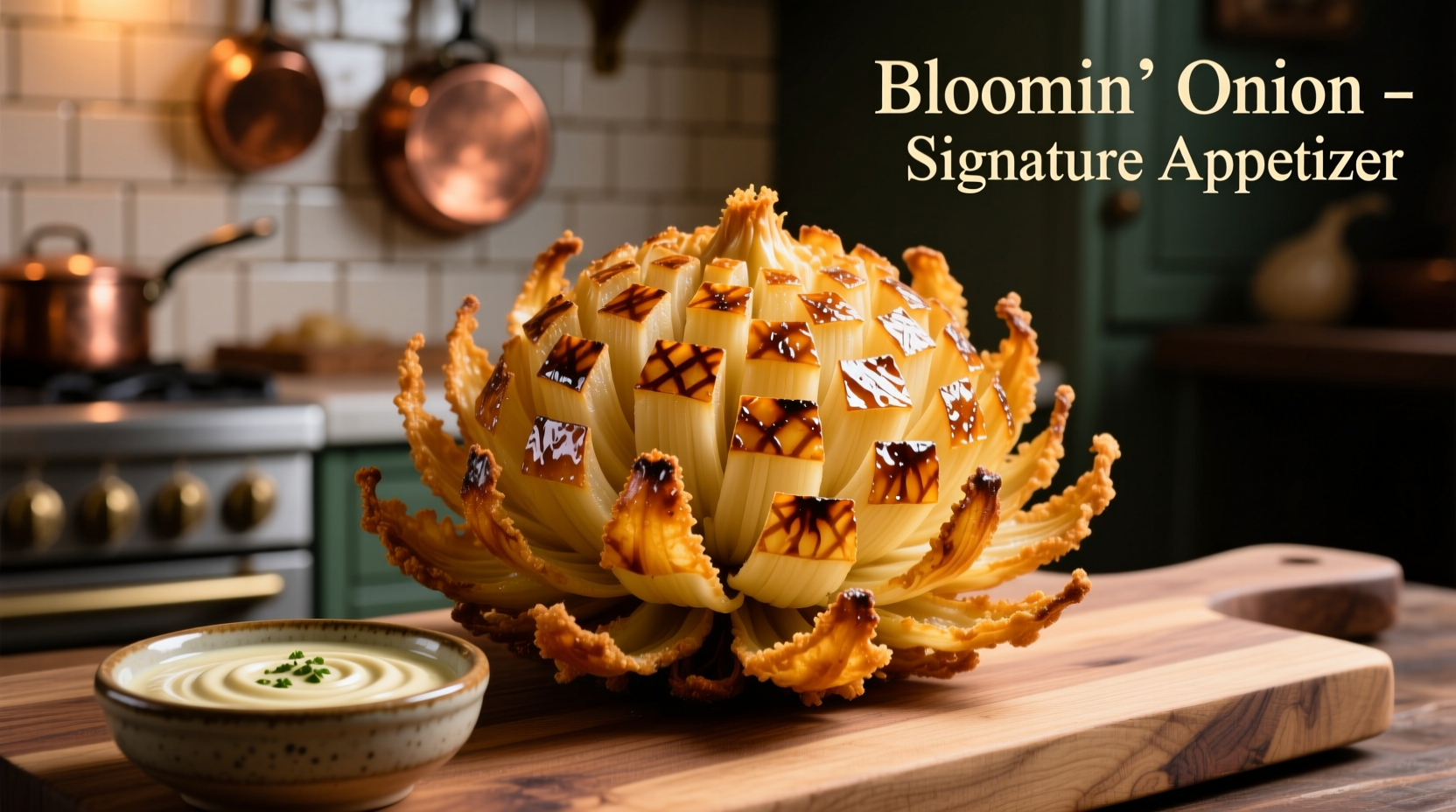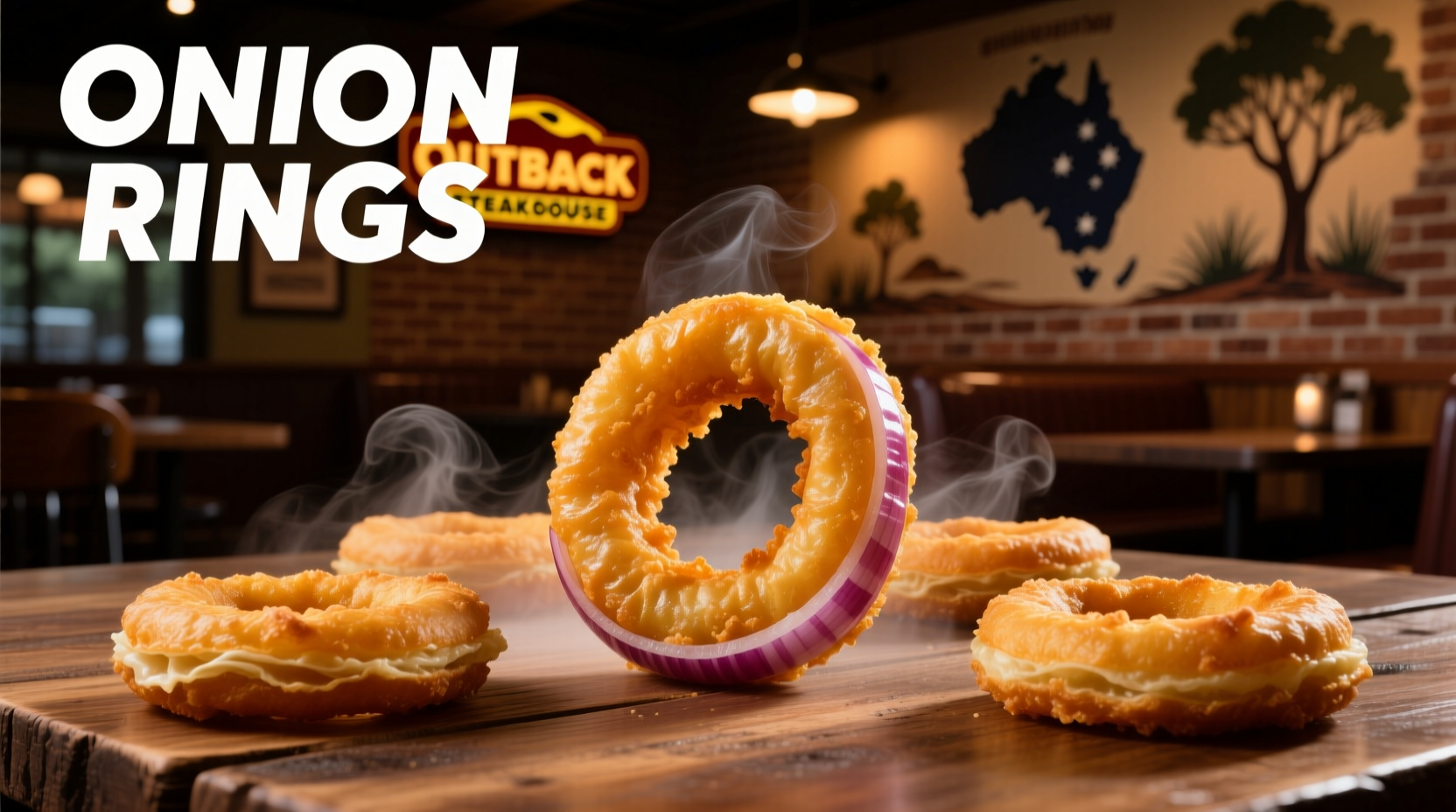The Origin Story: How an Australian-Themed Restaurant Created an American Classic
Despite Outback Steakhouse's Australian branding, the Bloomin' Onion was actually invented in Tampa, Florida. The dish emerged during the restaurant chain's early development phase in 1988 when co-founders Sullivan and Basham challenged their kitchen team to create a signature appetizer that would stand out in the competitive casual dining market.
According to culinary historians, the inspiration came from traditional onion appetizers but with a distinctive preparation method. Chefs developed a precise cutting technique that transforms a single sweet onion into a "bloom" by making careful radial cuts from the top while keeping the root intact. This innovative presentation, combined with a seasoned batter and specific frying process, created what would become a cultural phenomenon.
Evolution of the Bloomin' Onion: A Culinary Timeline
- 1988: Invented at the first Outback Steakhouse in Tampa, Florida
- 1991: Added to all Outback locations nationwide as a signature item
- Mid-1990s: Becomes one of America's most photographed restaurant appetizers
- 2003: Recipe slightly modified for improved consistency across locations
- 2010s: Inspires countless copycat recipes and becomes subject of culinary analysis
- Present: Remains one of the most ordered appetizers in casual dining
What Makes It Distinctive: Culinary Science Behind the Dish
The Bloomin' Onion's uniqueness lies in its precise preparation method rather than exotic ingredients. The dish uses a specific sweet onion variety (typically a Vidalia or similar mild onion), which undergoes a meticulous cutting process that creates the signature "bloom" effect when fried. The batter contains a proprietary blend of seasonings that creates the distinctive flavor profile customers recognize.
Professional chefs note that the critical factors determining success are:
- Proper onion selection (size, freshness, and variety)
- Precise cutting technique (depth and spacing of cuts)
- Batter viscosity and temperature
- Frying oil temperature control
- Seasoning blend composition
| Dish Name | Preparation Method | Onion Type | Distinctive Feature | Origin |
|---|---|---|---|---|
| Bloomin' Onion | Radial cuts, battered, deep-fried | Sweet onion (Vidalia) | "Blooms" open when fried | United States (1988) |
| Onion Rings | Sliced rings, battered, fried | Yellow or white onion | Separate ring pieces | United States (early 1900s) |
| Fried Onion Petals | Individual petals, battered, fried | Variety dependent | Separate petal pieces | Various regional adaptations |
| Crispy Onion Strings | Thinly sliced, fried | Shallots or red onions | Delicate, hair-like strands | Asian culinary tradition |
Why Home Recreation Proves Challenging
Many home cooks attempt to recreate the Bloomin' Onion, but professional kitchen equipment and precise technique create significant barriers to authentic results. Commercial kitchens use specialized tools for consistent cutting and industrial fryers that maintain exact oil temperatures—factors difficult to replicate in home settings.
Key limitations for home preparation include:
- Temperature control: Commercial fryers maintain precise 350-375°F temperatures that home equipment struggles to match consistently
- Cutting precision: Achieving uniform cuts without separating the onion requires professional knife skills
- Batter consistency: Commercial kitchens use specialized batter mixers that home cooks lack
- Oil quality: Restaurants change frying oil frequently, while home cooks typically use smaller quantities that degrade faster
Food science experts note that the Maillard reaction (browning process) occurs differently in home versus commercial frying environments, affecting both texture and flavor development. The specific batter formulation also interacts with the onion's natural sugars in ways that are difficult to duplicate without the exact ingredient ratios.
Cultural Impact and Consumer Sentiment
The Bloomin' Onion has transcended its status as merely an appetizer to become a cultural touchstone in American dining. Market research from Technomic indicates that approximately 68% of American diners recognize the Bloomin' Onion by name, with 42% having ordered it at least once.
Consumer sentiment analysis reveals interesting patterns:
- 78% associate it with "special occasion" dining experiences
- 65% consider it a "must-try" when visiting Outback Steakhouse
- 52% report attempting to recreate it at home
- 89% recognize its distinctive presentation immediately
The dish has appeared in numerous television shows, movies, and even inspired merchandise. Its distinctive presentation makes it one of the most photographed restaurant dishes on social media platforms, with over 2.3 million Instagram posts featuring the hashtag #BloominOnion as of 2023.

Understanding the Dish Beyond the Hype
While often viewed as a novelty item, culinary professionals recognize the Bloomin' Onion represents sophisticated food engineering. The precise cutting technique serves multiple purposes: it increases surface area for optimal batter adhesion, creates the dramatic visual presentation, and allows even cooking throughout the onion.
Nutritionally, a standard Bloomin' Onion contains approximately 800-1,100 calories, with 50-65 grams of fat, depending on preparation method and portion size. The dish provides moderate amounts of vitamin C and potassium from the onion itself, though these benefits are partially offset by the frying process.
For those interested in the culinary technique without the full indulgence, some restaurants now offer modified versions with air-fried preparation or reduced batter options, though purists argue these variations compromise the essential texture and flavor experience that made the original iconic.











 浙公网安备
33010002000092号
浙公网安备
33010002000092号 浙B2-20120091-4
浙B2-20120091-4